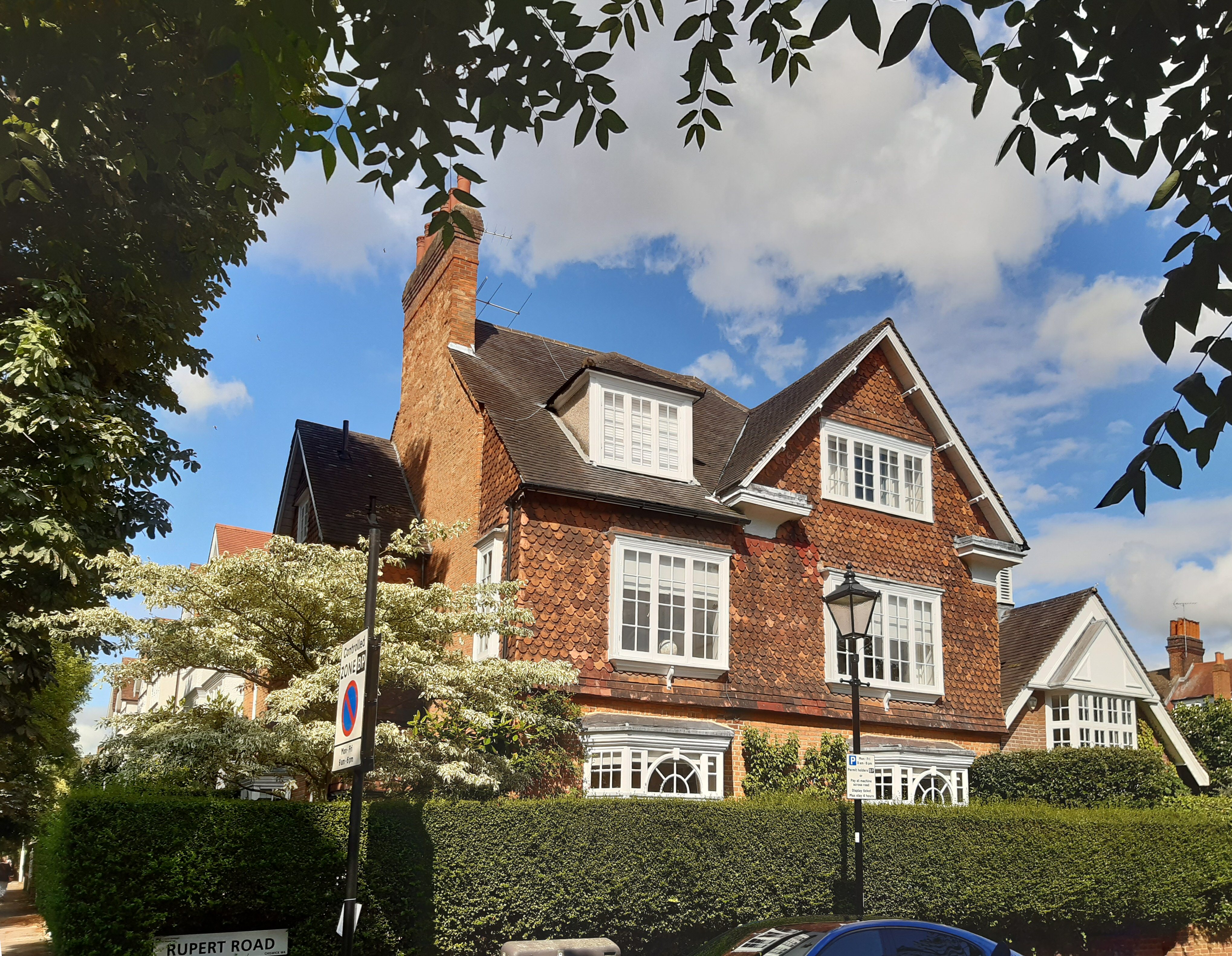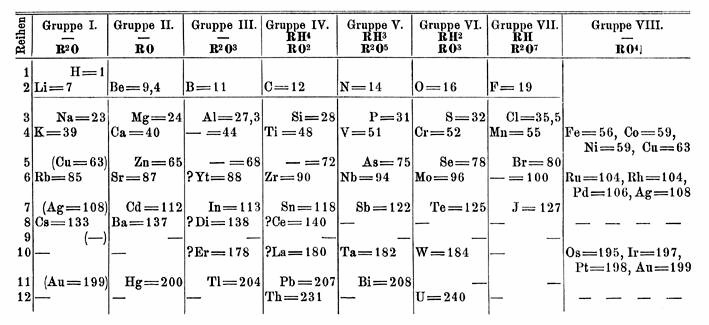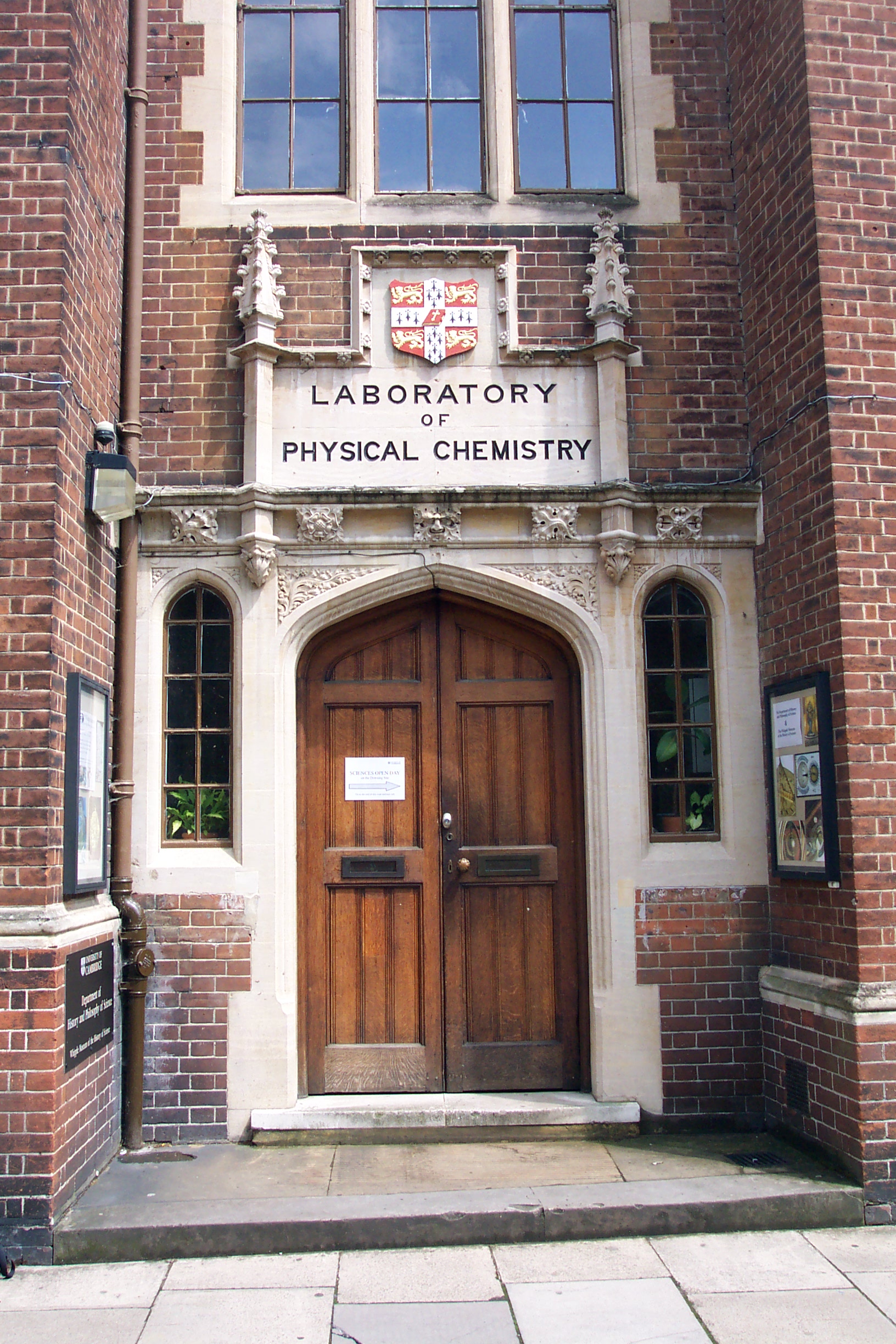|
Alfred Maddock
Alfred Gavin Maddock (1917–2009) was an English inorganic chemist, radiochemist and spectroscopist who worked on the Tube Alloys Project and the Manhattan Project during World War II. Those projects resulted in the development of the atomic bomb. He may be best known for, during World War II, spilling Canada's entire supply of plutonium which was 10 milligrams onto a wooden laboratory bench, and for recovered 9 and a half milligrams of plutonium. He recovered it by wet chemistry. He also had a distinguished, though less eventful, post-war academic career. Biography Maddock was born in Bedford Park, London, Bedford Park, a garden suburb of London, and was educated at Latymer Upper School. He won a state scholarship to study chemistry at the Royal College of Science (RCS), then a constituent part of Imperial College London. After his undergraduate education, he continued on to postgraduate studies at RCS under the supervision of inorganic chemist Professor H. J. Emeléus. Thos ... [...More Info...] [...Related Items...] OR: [Wikipedia] [Google] [Baidu] |
Bedford Park, London
Bedford Park is a suburban development in Chiswick, London, begun in 1875 under the direction of Jonathan Carr, with many large houses in British Queen Anne Revival style by Norman Shaw and other leading Victorian era architects including Edward William Godwin, Edward John May, Henry Wilson, and Maurice Bingham Adams. Its architecture is characterised by red brick with an eclectic mixture of features, such as tile-hung walls, gables in varying shapes, balconies, bay windows, terracotta and rubbed brick decorations, pediments, elaborate chimneys, and balustrades painted white. The estate's main roads converge on its public buildings, namely its church, St Michael and All Angels; its club, now the London Buddhist Vihara; its inn, The Tabard, and next door its shop, the Bedford Park Stores; and its Chiswick School of Art, now replaced by the Arts Educational Schools. Bedford Park has been described as the world's first garden suburb, creating a model of apparent infor ... [...More Info...] [...Related Items...] OR: [Wikipedia] [Google] [Baidu] |
Fluorine
Fluorine is a chemical element; it has Chemical symbol, symbol F and atomic number 9. It is the lightest halogen and exists at Standard temperature and pressure, standard conditions as pale yellow Diatomic molecule, diatomic gas. Fluorine is extremely Reactivity (chemistry), reactive as it reacts with all other Periodic table, elements except for the light Noble gas, noble gases. It is highly toxicity, toxic. Among the elements, fluorine ranks Abundance of the chemical elements, 24th in cosmic abundance and 13th in crustal abundance. Fluorite, the primary mineral source of fluorine, which gave the element its name, was first described in 1529; as it was added to metal ores to lower their melting points for smelting, the Latin verb meaning gave the mineral its name. Proposed as an element in 1810, fluorine proved difficult and dangerous to separate from its compounds, and several early experimenters died or sustained injuries from their attempts. Only in 1886 did French chemist He ... [...More Info...] [...Related Items...] OR: [Wikipedia] [Google] [Baidu] |
Protactinium
Protactinium is a chemical element; it has symbol Pa and atomic number 91. It is a dense, radioactive, silvery-gray actinide metal which readily reacts with oxygen, water vapor, and inorganic acids. It forms various chemical compounds, in which protactinium is usually present in the oxidation state +5, but it can also assume +4 and even +3 or +2 states. Concentrations of protactinium in the Earth's crust are typically a few parts per trillion, but may reach up to a few parts per million in some uraninite ore deposits. Because of its scarcity, high radioactivity, and high toxicity, there are currently no uses for protactinium outside scientific research, and for this purpose, protactinium is mostly extracted from spent nuclear fuel. The element was first identified in 1913 by Kazimierz Fajans and Oswald Helmuth Göhring and named "brevium" because of the short half-life of the specific isotope studied, 234mPa. A more stable isotope of protactinium, 231Pa, was discovered in 191 ... [...More Info...] [...Related Items...] OR: [Wikipedia] [Google] [Baidu] |
Actinide
The actinide () or actinoid () series encompasses at least the 14 metallic chemical elements in the 5f series, with atomic numbers from 89 to 102, actinium through nobelium. Number 103, lawrencium, is also generally included despite being part of the 6d transition series. The actinide series derives its name from the first element in the series, actinium. The informal chemical symbol An is used in general discussions of actinide chemistry to refer to any actinide. The 1985 IUPAC nomenclature of inorganic chemistry, IUPAC ''Red Book'' recommends that ''actinoid'' be used rather than ''actinide'', since the suffix ''-ide'' normally indicates a negative ion. However, owing to widespread current use, ''actinide'' is still allowed. Actinium through nobelium are f-block elements, while lawrencium is a d-block element and a transition metal. The series mostly corresponds to the filling of the 5f electron shell, although as isolated atoms in the ground state many have anomalous configu ... [...More Info...] [...Related Items...] OR: [Wikipedia] [Google] [Baidu] |
St Catharine's College, Cambridge
St Catharine's College is a Colleges of the University of Cambridge, constituent college of the University of Cambridge, England. Founded in 1473 as Katharine Hall, it adopted its current name in 1860. The college is nicknamed "Catz". The college is located in the historic city-centre of Cambridge, and lies just south of King's College, Cambridge, King's College and across the street from Corpus Christi College, Cambridge, Corpus Christi College. The college is notable for its open court (rather than closed quadrangle (architecture), quadrangle) that faces towards Trumpington Street. The college community consists of approximately 1000 Fellow#In ancient universities, Fellows, graduate and undergraduate students, and staff. The college is led by a List of masters of St Catharine's College, Cambridge, Master, and the college is run by a governing body comprising the official and professorial Fellows of the college, chaired by the Master. The current Master, John Benger, Sir John B ... [...More Info...] [...Related Items...] OR: [Wikipedia] [Google] [Baidu] |
University Of Cambridge
The University of Cambridge is a Public university, public collegiate university, collegiate research university in Cambridge, England. Founded in 1209, the University of Cambridge is the List of oldest universities in continuous operation, world's third-oldest university in continuous operation. The university's founding followed the arrival of scholars who left the University of Oxford for Cambridge after a dispute with local townspeople. The two ancient university, ancient English universities, although sometimes described as rivals, share many common features and are often jointly referred to as Oxbridge. In 1231, 22 years after its founding, the university was recognised with a royal charter, granted by Henry III of England, King Henry III. The University of Cambridge includes colleges of the University of Cambridge, 31 semi-autonomous constituent colleges and List of institutions of the University of Cambridge#Schools, Faculties, and Departments, over 150 academic departm ... [...More Info...] [...Related Items...] OR: [Wikipedia] [Google] [Baidu] |
Department Of Chemistry, University Of Cambridge
The Yusuf Hamied Department of Chemistry is the University of Cambridge's chemistry department. It was formed from a merger in the early 1980s of two separate departments that had moved into the Lensfield Road building decades earlier: the Department of Physical Chemistry (originally led by Professor Ronald Norrish FRS, Nobel Laureate; the department was previously located near the Old Cavendish in Free School Lane - see photo) and the Department of Chemistry (that included theoretical chemistry and which was led by Lord (Alexander) Todd FRS, Nobel Laureate) respectively. Research interests in the department cover a broad of chemistry ranging from molecular biology to geophysics. The department is located on the Lensfield Road, next to the Panton Arms on the South side of Cambridge. In December 2020, it was renamed for 30 years in recognition of a donation from Dr Yusuf Hamied, an alumnus of the department. Research The Department's research is organised around five Research ... [...More Info...] [...Related Items...] OR: [Wikipedia] [Google] [Baidu] |
Cambridge University
The University of Cambridge is a Public university, public collegiate university, collegiate research university in Cambridge, England. Founded in 1209, the University of Cambridge is the List of oldest universities in continuous operation, world's third-oldest university in continuous operation. The university's founding followed the arrival of scholars who left the University of Oxford for Cambridge after a dispute with local townspeople. The two ancient university, ancient English universities, although sometimes described as rivals, share many common features and are often jointly referred to as Oxbridge. In 1231, 22 years after its founding, the university was recognised with a royal charter, granted by Henry III of England, King Henry III. The University of Cambridge includes colleges of the University of Cambridge, 31 semi-autonomous constituent colleges and List of institutions of the University of Cambridge#Schools, Faculties, and Departments, over 150 academic departm ... [...More Info...] [...Related Items...] OR: [Wikipedia] [Google] [Baidu] |
Heavy Water Reactor
A heavy water reactor (HWR) is a type of nuclear reactor which uses heavy water (D2O, deuterium oxide) as a neutron moderator. It may also use this as the coolant, in the case of pressurized heavy water reactors. Due to heavy water's low neutron absorption cross section, HWRs can operate with natural uranium fuel. History "Atomic pile" experiments were carried out across Europe and North America following the 1938 discovery of nuclear fission. The sole supply of heavy water was from the Vemork hydroelectric power plant in Norway. The world's entire supply had been sent to Paris for experiments, but smuggled to England during the Fall of France. In November 1940, Hans von Halban and Lew Kowarski at the University of Cambridge carried out one of the first heavy water-moderated pile experiments, measuring net neutron production. In 1958, Patrick Blackett wrote about Frédéric Joliot-Curie: "There is little doubt that, had the war not intervened, the world’s first self-sustain ... [...More Info...] [...Related Items...] OR: [Wikipedia] [Google] [Baidu] |
Ottawa
Ottawa is the capital city of Canada. It is located in the southern Ontario, southern portion of the province of Ontario, at the confluence of the Ottawa River and the Rideau River. Ottawa borders Gatineau, Gatineau, Quebec, and forms the core of the Ottawa–Gatineau census metropolitan area (CMA) and the National Capital Region (Canada), National Capital Region (NCR). Ottawa had a city population of 1,017,449 and a metropolitan population of 1,488,307, making it the list of the largest municipalities in Canada by population, fourth-largest city and list of census metropolitan areas and agglomerations in Canada, fourth-largest metropolitan area in Canada. Ottawa is the political centre of Canada and the headquarters of the federal government. The city houses numerous List of diplomatic missions in Ottawa, foreign embassies, key buildings, organizations, and institutions of Government of Canada, Canada's government; these include the Parliament of Canada, the Supreme Court of ... [...More Info...] [...Related Items...] OR: [Wikipedia] [Google] [Baidu] |
Cavendish Laboratory
The Cavendish Laboratory is the Department of Physics at the University of Cambridge, and is part of the School of Physical Sciences. The laboratory was opened in 1874 on the New Museums Site as a laboratory for experimental physics and is named after the British chemist and physicist Henry Cavendish. The laboratory has had a huge influence on research in the disciplines of physics and biology. The laboratory moved to its present site in West Cambridge in 1974. , 30 Cavendish researchers have won Nobel Prizes. Notable discoveries to have occurred at the Cavendish Laboratory include the discovery of the electron, neutron, and structure of DNA. Founding The Cavendish Laboratory was initially located on the New Museums Site, Free School Lane, in the centre of Cambridge. It is named after British chemist and physicist Henry Cavendish for contributions to science and his relative William Cavendish, 7th Duke of Devonshire, who served as chancellor of the university and donated fu ... [...More Info...] [...Related Items...] OR: [Wikipedia] [Google] [Baidu] |
Curie Institute (Paris)
Centre of protontherapy Institut Curie is a medical, biological and biophysical research centre in France. It is a private non-profit foundation operating a research center on biophysics, cell biology and oncology and a hospital specialized in treatment of cancer. It is located in Paris, France. Institut Curie is member of EU-LIFE, an alliance of leading life sciences research centres in Europe. Research The institute now operates several research units in cooperation with national research institutions CNRS and INSERM. There are several hundred research staff at the institute. ''Institut Curie'' does not offer undergraduate degrees, but awards PhDs and employs many postdoctoral students alongside its permanent staff. Institut Curie is a constituent college (associate member) of University PSL. Hospital ''Institut Curie'' runs the ''Hôpital Claudius Régaud'', a hospital specializing in cancer. The institute also operates the proton therapy center at Orsay, one of the few ... [...More Info...] [...Related Items...] OR: [Wikipedia] [Google] [Baidu] |






